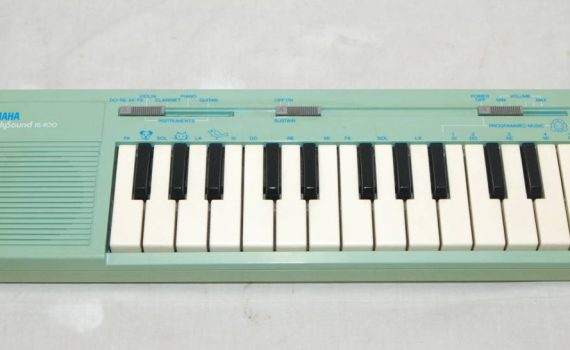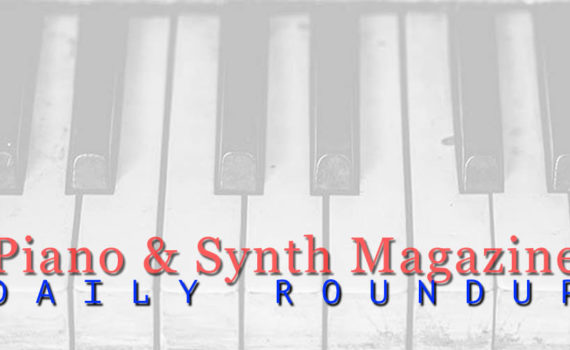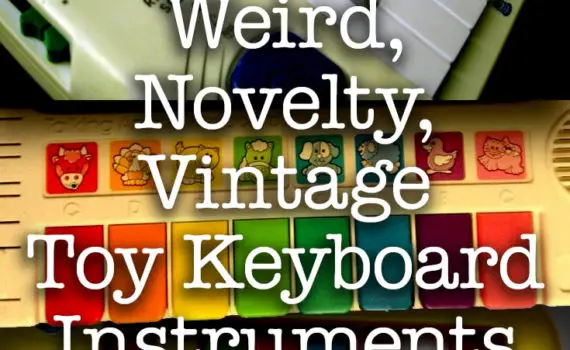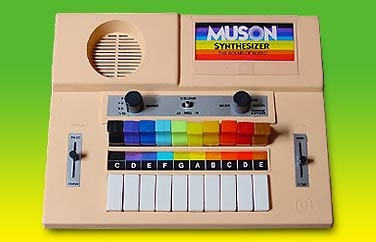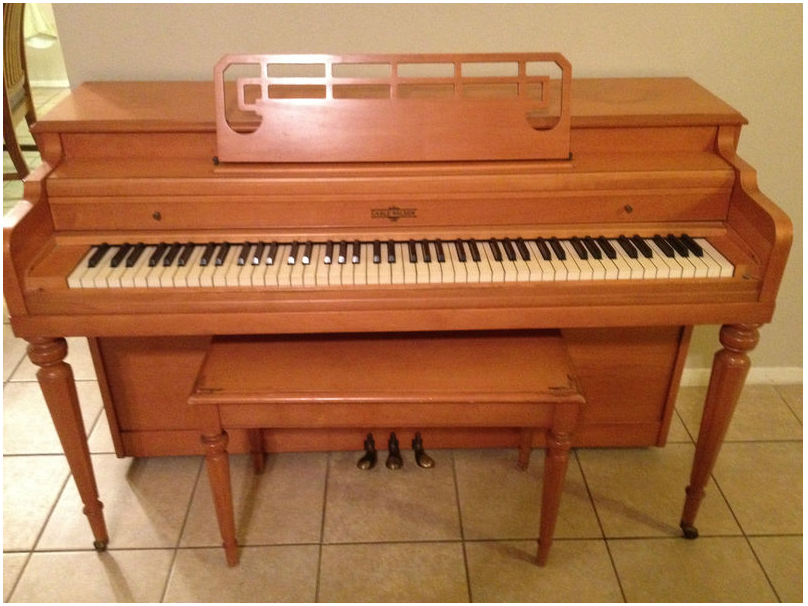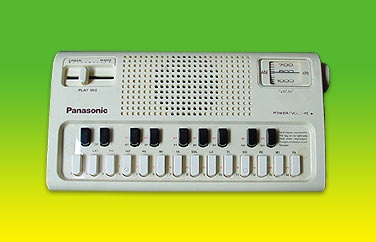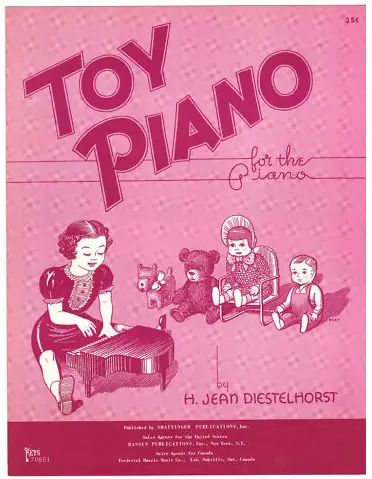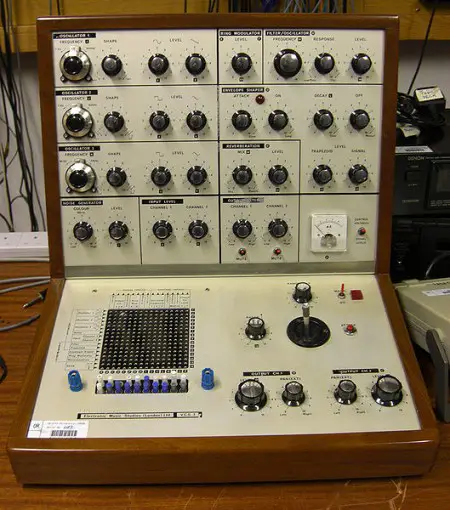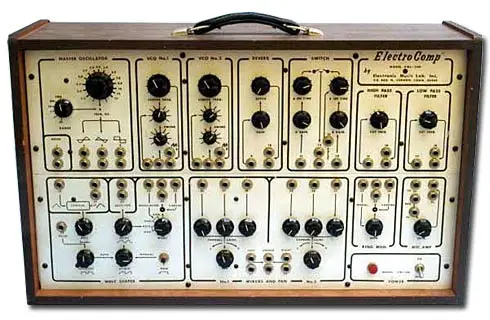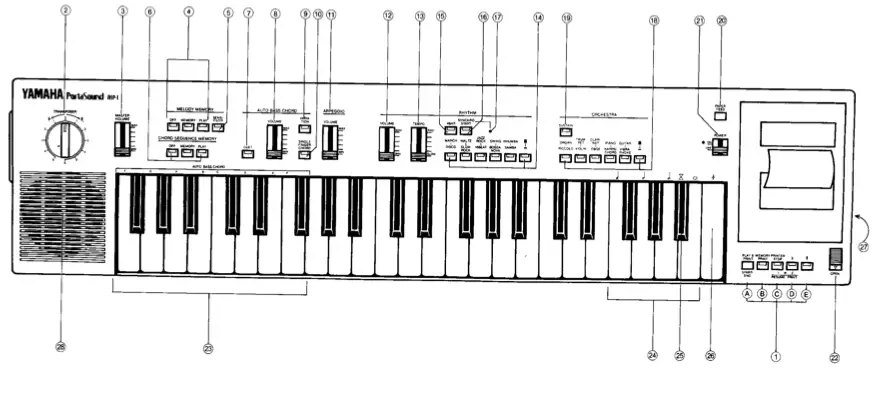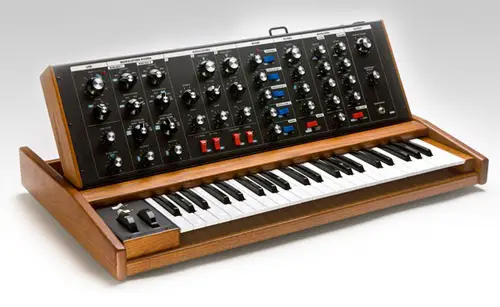Today we are blessed with a plethora of software, apps and keyboards with built-in music theory/practice features, but back in the 1980s that wasn’t the case. Yamaha built a range of mini ‘toy’ keyboards, primarily aimed at children but usable by any budding musicians, called the HandySound Yamaha decided to […]
Vintage
Abbey Road One: Mysterious Reeds released Spitfire Audio has announced the launch of its latest sound library, Abbey Road One: Mysterious Reeds. Recorded in the unmistakable acoustics of the world-famous Studio One with exceptional players, award-winning sound engineers, and priceless microphones as a departure from standard woodwind orchestration by capturing […]
1. Cute little wooden organ with crooked keys Most likely manufactured by Emenee as a number of other models looking similar to this are accredited to the musical instrument company. The cute gold, green and red sunburst motif top center does not seem to appear on any other instruments we’ve […]
A rare find is this half-century old Excelsior Concert Symphony vintage piano organ from the 1950s/1960s. It even comes with a collection of music books which can be paired with the numbers above the keys, making it easier for beginners to play. Available from this auction.
Here’s a colourful keyboard find for you. Though you could argue it remains squarely in the ‘toy’ department, the concepts here are pretty cool. OK, so you only have the C major scale to play with, but take a look at those coloured blocks above the keys. These make contact […]
A fantastic acoustic upright piano from the mid-1950s, this Cable-Nelson spinet piano is beautiful and available via this auction. This is a beautiful piano that still looks and sounds great after 56 years! It belonged to my mother and she gave it to me a few years ago. We’re making […]
We love digging up cool/bizarre little instruments and the Panasonic R-1088 is just such a find. Sorry, Panasonic? Since when did they make musical instruments? Well, they may not be in the same league as Yamaha, Roland or Korg, but that doesn’t mean they can’t produce a product you only […]
If you liked our ten toy pianos and want something in print to match the theme, check out this auction for the Toy Piano by H Jean Diestelhorst circa 1960. It’s only four pages long but is a genuine piece of ’60s music. It’s published by Shattinger Publications Inc.
Overview One of the very first synths created, in the late 1960s, by England-based Electronic Music Studios. The highly portable modular synth featured a three octave keyboard, monophonic sound, noise generator, two input amps, one ring mod, one voltage controlled low-pass filter and spring reverb unit, one trapezoid envelope generator, […]
Overview One of the very first synths created, in the late 1960s, by Electronic Music Laboratories. Similar to Moog and ARP synths, the company designed for the educational market. The ElectroComp 200 included a number of features including stereophonic sound, a Wave Shaper. It has a great front panel and […]
I was delving through some old keyboard manuals posted online and came across the Yamaha MP-1 manual from the early ’80s. This is not to be confused with the Yamaha MP1 upright piano. There’s a big difference! Remember electronics manuals from that decade? They weren’t the slick affairs you get […]
Moog introduces the Minimoog Voyager OS, featuring the analog sound engine of the Voyager, but without the digital controls. Moog says that it’s the perfect solution for players looking for a roadworthy replacement for their Minimoog Model D, as a full-featured centrepiece for a modular synth rig, or for those […]
For the tiny-fingered, space-challenged mono-synth lover, the vintage Yamaha CS-01 might need to be in your collection. SynthMuseum says It was obviously marketed to the young, first synth buyer, market. However, dispite it’s mini-sized keys, it has been since adopted by many professionals for it’s simple design, active sliders, and […]
So which of these are you most familiar with? Yamaha CE-20 or Yamaha DX7 Yep, thought so. Not a huge commercial success, the CE-20 came before the legendary DX-7: Introduced in 1982 Price: US$1395 Synthesis: FM (Frequency Modulation) Voices: 20 (Piccolo, Flute, Oboe, Clarinet, Saxophone, Trumpet 1, Trumpet 2, Trombone, […]
My first serious synth purchase was the Yamaha TG500 sound module. Although it cheated somewhat, it was heralded as the world’s first 64-note polyphonic synth, and used Yamaha’s Advanced Wave Modulation (AWM) sampling technology. Of course, I already had a keyboard to control it – I think it was a […]
